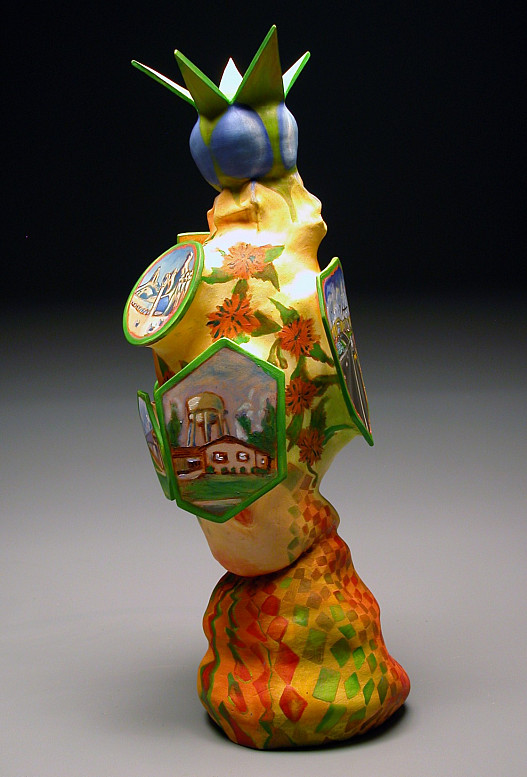Open gallery

Artist Statement, Nouveau Everyday, May, 2013
Accuse not Nature, she hath done her part;
Do thou but thine; and be not diffident
Of Wisdom; she deserts thee not, if thou
Dismiss not her, when most thou needest her nigh,
By attributing overmuch to things
Less excellent, as thou thyself perceivest.
For, what admirest thou, what transports thee so,
An outside? fair, no doubt, and worthy well
Thy cherishing, thy honouring, and thy love;
Not thy subjection: Weigh with her thyself;
Then value: Oft-times nothing profits more
Than self-esteem, grounded on just and right
Well managed; of that skill the more thou knowest,
The more she will acknowledge thee her head,
And to realities yield all her shows:
Made so adorn for thy delight the more,
So awful, that with honour thou mayest love.
-Paradise Lost, John Milton
When I was young, nature seemed most powerful and it was her force that easily conveyed my whimsy into reality. On the land of the house on Morningbluff, there was a hollow oak harboring tree ducks, a silken trunked Crepe Myrtle for caressing, St. Augustine lovingly tended to, many climbing trees, a Mountain Laurel fitted with tarantulas, and pots of herbs for exotic Barbie-Ken rendezvous. The potential of nature for a child-like imagination is manifold; naturally, a heart and head vulnerable to inspiration, will seethe with the fecundity of the natural worlds various diversions and joyful tangents. The fact that place impacts an inhabitant’s desire to grow is the reason why I made this kind of artwork for Nouveau Everyday. I wanted to test the vessels’ autonomy and sense of resolution when paired with chaotic environments meant to stand for the present while making reference to some of the people who knew best how to create place- the Art Nouveau thinkers of the late 19th century.
Art Nouveau artists and architects, such as Antoni Gaudi, Hector Guimard, Victor Horta and Louis Comfort-Tiffany had a charming and strong sense of play. Instead of dawdling with their dollies, so to speak, they set out to put people in physical contexts, which promoted sympathy and enlightenment through clarity of natural beauty. They took the projectile bloom paths of flowers and laid those lines into a room as to cradle inhabitants with the novel purpose of spring, which is to grow. They upheld that transitions throughout the natural world are steady and that the land under an oak’s shade will be deep green and that there will be briar vines affixed to the articulation of it’s rough bark and that there are limbs before leaves and ball moss/mistletoe adornments- they realized that things are highly reactionary in there natural context and that carefully arranging a structural transition can affect a person to more authentically embrace their potency in the present.
I grew without much of a catalytic physical context and though I believe creativity was stemmed due to that, it was not stiffened. We moved down the street to Willowbluff. The feature that I grew to love most about the second house of my adolescence was not the yard, but the two-story rooftop because you could sit on the roof ridge at night and feel the mood of the city, which was peaceful and lonely with the tide like whisper of the highway in the distance.
Our built context has gotten to be much more like a juggernaut than unfurling tendril. It is not difficult to choose to ignore an environment that does not encourage edification. But there are still opportunities in our cities for discovery and fulfillment and new patterns of development, which answer to our need for authentication and happiness through nature abiding.















